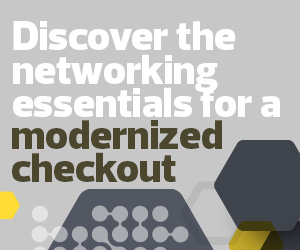Some businesses are opting for solutions that reduce the need for a POS altogether. Consumers can self-scan products as they add them to their physical carts, or virtual carts for home delivery, and complete the shopping trip with a tap on their own screens. The beauty of this approach is that every transaction is processed centrally, allowing retailers to consolidate their transaction volume and reduce their cost per transaction from the payment processor. It also means that retailers may require fewer checkout lanes to support traditional POS customers.
How Different Kinds of Connectivity Can Work for Retailers
Connectivity can be split into two distinct areas: endpoint connectivity, which may include wired, wireless and cellular, and backhaul from the store to the data center, internet or cloud. From a retailer’s perspective, the type of connectivity may be driven by the endpoint type.
Wherever possible, retailers should think about having redundant connections and the ability to segment, direct and prioritize traffic based on traffic type and the endpoint’s or end user’s role. “Fragmented infrastructure made up of a patchwork of vendors complicates management and makes it more difficult to correlate data from different sources,” Scanlan says.
The most frequent misperception Scanlan encounters is that 5G cellular service will be the solution for all retail woes. Just as with prior generations of cellular service, indoor coverage will be inconsistent due to sources of interference from the building itself, HVAC, refrigeration, fixtures, etc. In the short term, public 5G may be better suited to being one of the backhaul channels using 5G gateways, like the Meraki MG series, Scanlan says.
And let’s not forget Wi-Fi. “All of these in-store devices need a lane,” says Wali Azim, CDW’s district sales manager for the Pacific Northwest. “The highway needs to be expanded because more people are driving. Lack of connectivity is directly related to the experience someone has in the store. If you don’t have robust Wi-Fi, your consumer will have a poor experience.”
Click the banner below to discover the best practices for modernizing retail checkout.












